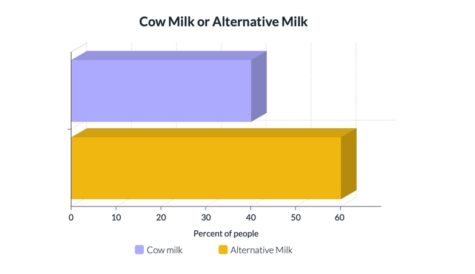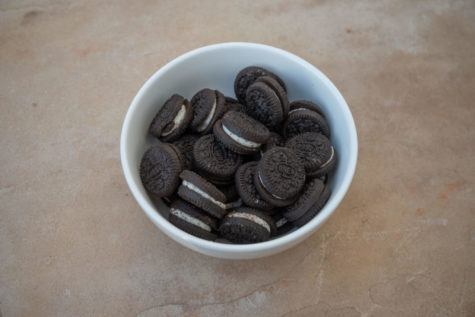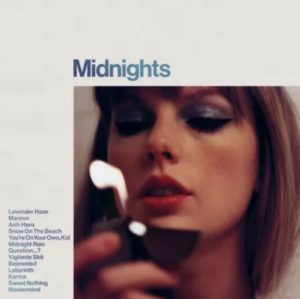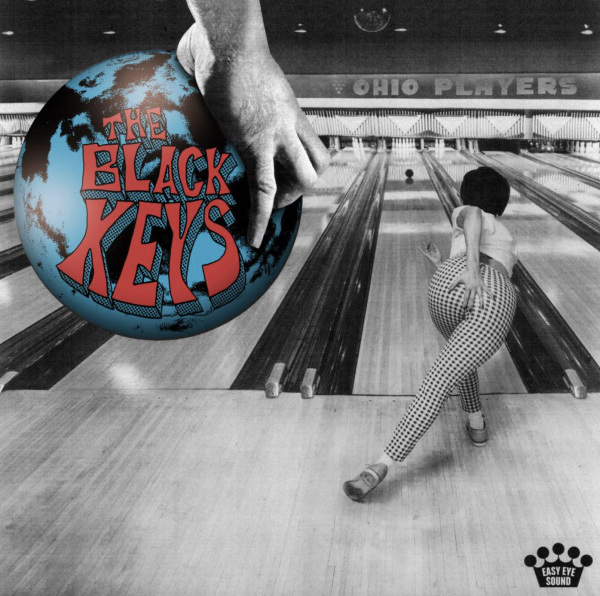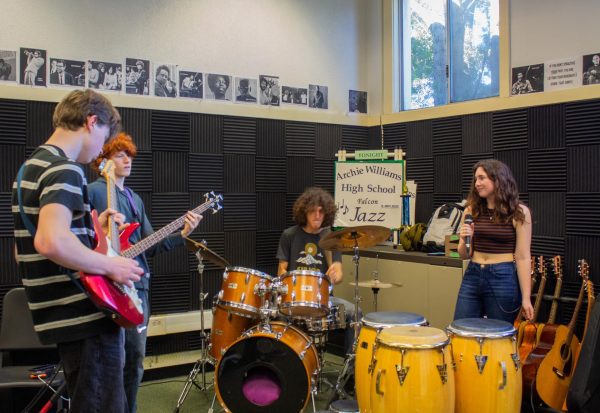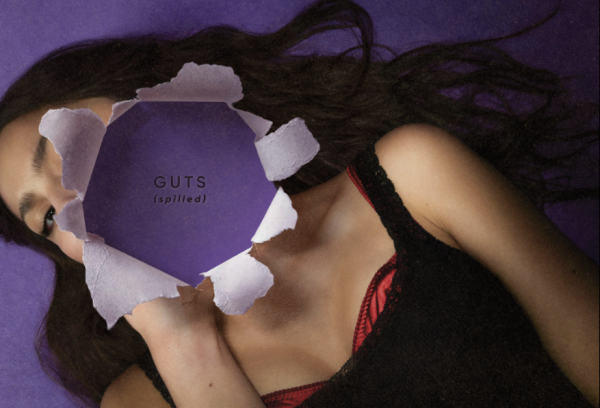Arctic Monkeys unlock a familiar and versatile new album, The Car
Friday, Oct. 21, marked the official release of the Arctic Monkeys seventh album, The Car. Alex Turner (lead vocals), Jamie Cook (guitarist), Nick O’Malley (bassist), and Matt Helders (drummer), formed the British indie rock band back in 2005. Their albums feature a range of genres from alternative and punk to psychedelic and blues. The band’s most popular album, AM, released nearly ten years ago.
While Arctic Monkeys started their musical career leaning towards punk, The Car maintains the mellow maturity of their recent work. The ten-song album offers an evolved yet consistent rendition of the alternative indie rock seen in their prior work. It falls in line with the progressional changes in their musical style, sounding somewhat similar to their previous album, Tranquility Base Hotel & Casino.
The Car plays around with a melancholic elegance while re-incorporating some old themes. Lyrically, the music reflects themes of past albums: failed relationships, bittersweet goodbyes and expressive language.
In “There’d Better be a Mirrorball,” the lyrics “I’d throw the rose tint back on the exploded view / Darling if I were you,” exemplifies the tragic allure of the song. These lyrics nonchalantly suggest viewing a past relationship in the most idealized way possible.
Lyrics from “Big Ideas” show a reminiscence and sentimental farewell to incredible memories. This could reference the shifting style of the band, indicating that they have had exceptional music from past albums and genres, but are moving on.
“I Ain’t Quite Where I Think I Am” describes a showy distraction from the difficulty of hardships mentioned in the song. In the lyrics “The disco strobes in the stumbling blocks”, the disco strobes serve as a diversion, glamourising hardships rather than cowering from them. Its multi-layered lyrics pair well with the song’s funky style, letting in even more variety to The Car.
Of the album’s ten tracks, “There’d Better be a Mirrorball,” and “Sculptures of Anything Goes” stand above the rest of the other tracks with their classic coolness and emotive lyricism. “There’d Better be a Mirrorball” is almost cinematic in its jazz-inspired nature and 60s influence. However, “Sculptures of Anything Goes” has a darker sound, reminiscent of one of Arctic Monkeys’ most popular albums, AM.
What The Car lacks is anything quite as flashy as a mirrorball. While the album was enjoyable, it simply wasn’t outstanding enough to garner more attention than some of the band’s previous work.
Two songs epitomize this: “Mr. Schwartz” and the album’s title track “The Car” prove to be generally unremarkable. While echoing Arctic Monkeys’ typical lyricism, they failed to stand out among the eight other songs on the album.
Arctic Monkeys released a versatile and skillfully done album with The Car, containing several catchy songs. However, the album didn’t reach the heights of the band’s best work. With its eloquent yet familiar style, The Car earns three out of five feathers.
Your donation will support the student journalists of Archie Williams High School. Your contribution will allow us to purchase equipment and cover our annual website hosting costs. Each donation will receive a magazine subscription for a year (6 copies a year), and become a part of the important work our publication is doing.
$35 -- Subscription to the magazine
$50 -- Silver Sponsorship
$75 -- Gold Sponsorship
$100 -- Platinum Sponsorship

Ava is a sophomore, in her second year of the class. She loves to dance, specifically ballet and has been doing it most her life. Her favorite thing to...




